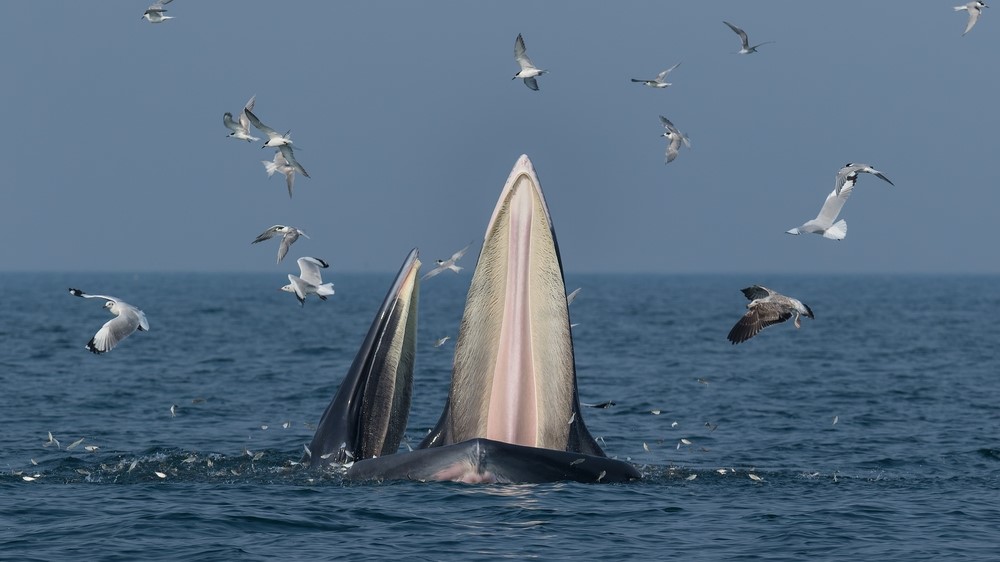Last year, people on a cruise ship near Antarctica got to see something very rare and amazing: a huge group of baleen whales eating on a huge amount of krill as far as the eye could see. The number of whales in the eating frenzy was first thought to be in the hundreds, but a new study that looked at footage taken by lucky whale watchers suggests that the real number may have been closer to 1,000.
On January 13, 2022, guests on the National Geographic Endurance, a polar adventure cruise ship run by National Geographic partner Lindblad Expeditions, got to see the amazing show. The ship came across the eating frenzy about 15.3 kilometers (9.3 miles) north of Coronation Island, which is the biggest of the South Orkney Islands. Fin whales (Balaenoptera physalus), which can grow to be about 85 feet (26 meters) long and are second in size only to blue whales (Balaenoptera musculus), made up the majority of the group.
On March 8, 2022, a video of the huge feeding event was posted on the Lindblad Expeditions-National Geographic YouTube page. It shows fin whales lunging for food at the surface and filling the air with water jets from their blowholes.
A zoologist who lives on the ship, Conor Ryan, said in the movie that they are all around them. Because there are so many of them, they keep running into each other. He also said that there were so many whales that you could smell their breath, which smelled like rotten cabbage.
At first, Ryan thought that there were between 200 and 400 people in the group. But he said it was hard to know how many there were because you could only see the whales at the top and not the ones feeding below.
In a new study, which came out in the journal Ecology on February 20, Ryan and his coworkers looked at photos and videos from the event again to get a better idea of how many whales were there. The experts counted about 970 fin whales in the supergroup. This is the most of this species that has ever been seen together in one place. There was also at least one blue whale and a pair of humpback whales (Megaptera novaeangliae) in the area, as well as Antarctic fur seals (Arctocephalus gazella) and thousands of seabirds, such as petrels, penguins, and albatrosses.
All of the hungry sea creatures ate Antarctic krill (Euphausia superba), which are tiny shrimp-like crabs that swim in huge groups. Smaller fish also ate these shrimp-like creatures.
This part of the Scotia Sea, which includes the South Orkney Islands, is a huge upwelling zone. This means that ocean currents bring nutrient-rich water from deep down to the top. The feeding event happened at the end of a big spring phytoplankton bloom, which gave krill the food they needed to grow quickly, the researchers wrote in their study.
Ryan said in the video that there must be millions, if not billions, of tons of krill below us.
After almost being wiped out by killing in the middle of the 20th century, the number of fin whales is on the rise again. There are now about 100,000 of them in the world, but the International Union for Conservation of Nature’s (IUCN) Red List of Threatened Species says that they are still at risk of going extinct because of things like climate change, plastic pollution, and overfishing of krill by humans.
Still, the sight of such a big group gives conservationists hope for the future of the species.
Matthew Savoca, a marine biologist at Stanford University’s Hopkins Marine Station and co-author of the study, told National Geographic that something like this probably wouldn’t have been that unusual a little more than a century ago. He also said that this is a sign that we are going in the right way.







